Armour Guard Lay Flat Hose
Armour Guard Lay flat hose is a heavy-duty Lay flat hose engineered for demanding industrial discharge applications where abrasion, pressure, and handling stress are constant challenges. This Armour Guard industrial hose features a unique nitrile/PVC blend and a reinforced, extruded-through-the-weave construction that delivers high durability and wear resistance. Designed as a reinforced PVC Lay flat hose with a protective outer cover, it provides a smooth bore hose for improved flow, high tensile strength, and long service life in rugged industrial environments.

Home
Lay Flat Hose
Industrial
Armour Guard Lay Flat HoseBuilt-In Performance Features
The Armour Guard lay flat hose is engineered as an extreme-duty lay flat hose for industrial discharge applications where abrasion, pressure, and handling stress are unavoidable.

- Heavy-wall lay flat hose constructed using a unique nitrile PVC blend
- One-piece, extruded-through-the-weave design for uniform strength
- Fully encapsulated polyester reinforced hose structure with high tensile yarns
- Ozone-resistant synthetic rubber liner and cover
- Abrasion-resistant lay flat hose with high wear resistance
- Smooth bore hose design that expands under pressure to reduce friction loss
- Anti-burst technology supporting consistent working pressure
- Resistant to fuels, oils, heat, and a wide range of industrial chemicals
- Flexible industrial lay flat hose that remains easy to clean and maintain
Why Armour Guard Performs Better
The Armour Guard industrial hose offers measurable advantages over conventional rubber and standard PVC discharge hoses in demanding jobsite conditions.
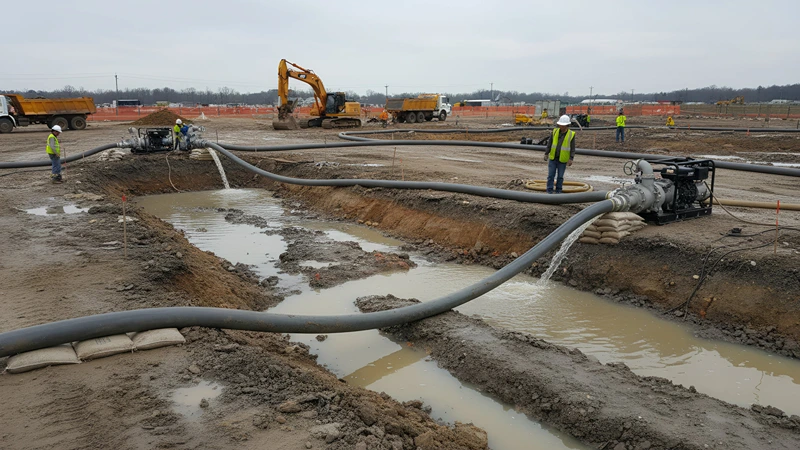
- Reduced friction loss improves flow efficiency during high-volume discharge.
- High-pressure lay-flat hose performance with improved pressure stability
- Lightweight construction compared to rubber hoses without sacrificing durability
- Drag-resistant lay flat hose design suitable for rough terrain and repeated movement
- Cut-resistant hose and puncture-resistant hose performance for harsh environments
- Compact lay-flat profile enables faster deployment and easier storage
- Performs reliably across a wide operating temperature range (-36°F to 120°F)
Business & Performance Benefits
For industrial users, the reinforced PVC lay flat hose design of Armour Guard delivers long-term operational value.

- Extended service intervals due to high durability lay flat hose construction.
- Lower replacement and downtime costs through superior abrasion resistance
- Improved system efficiency from smooth bore, high-flow performance
- Reliable performance in extreme duty and high-wear applications
- Reduced handling fatigue while maintaining rugged industrial hose strength
- Long service life hose solution suited for continuous, demanding use cases
Technical Specifications
The Armour Guard lay flat hose is engineered for consistent performance in demanding industrial discharge applications. Built as a reinforced PVC lay flat hose with a nitrile PVC blend and high-tensile polyester reinforcement, it delivers high-pressure capability, abrasion resistance, and long service life in extreme duty environments.

Construction Overview
- Hose type: Armour Guard industrial hose
- Construction: One-piece, extruded-through-the-weave
- Reinforcement: Polyester reinforced hose with fully encapsulated high-tensile yarns
- Tube and cover: Nitrile PVC blend
- Bore: Smooth-bore hose for reduced friction loss
- Color: Black
- Temperature range: -36°F to +120°F
- Performance focus: Abrasion-resistant hose, cut-resistant, puncture-resistant, impact-resistant, and drag-resistant lay flat hose
Armour Guard Lay Flat Hose – Size & Pressure Ratings
Nominal Size | Inside Diameter | Service Pressure | Proof Pressure | Burst Pressure | Weight (50 ft / 15 m) | Coil Diameter (50 ft / 15 m) |
|---|---|---|---|---|---|---|
1½ in | 38 mm | 300 psi / 2100 kPa | 600 psi / 4200 kPa | 900 psi / 6300 kPa | 14 lb / 6.4 kg | 14¾ in / 375 mm |
2½ in | 64 mm | 300 psi / 2100 kPa | 600 psi / 4200 kPa | 900 psi / 6300 kPa | 26 lb / 11.8 kg | 16½ in / 419 mm |
Talk to our team about specifying Armour Guard for your operation.
Aqua Guard™ vs Armour Guard® vs WAT-Hog™ Lay Flat Hoses
Product Comparison
This comparison highlights how Anaconda’s three industrial lay flat hose solutions differ in construction, performance focus, and typical use cases, helping buyers select the right hose for their operating conditions.
Criteria | Aqua Guard™ | Armour Guard® | WAT-Hog™ |
|---|---|---|---|
Primary Use | Potable water transfer | Industrial water discharge | Fuel, wastewater, sewer, and high-demand transfer |
Certification | NSF 61 certified for potable water | Not intended for potable water | Available with static discharge wires for fuel transfer |
Construction Type | Through-the-weave, one-piece design | Extruded-through-the-weave, one-piece design | Through-the-weave, one-piece design |
Cover & Liner Material | Elastomeric polyurethane | Nitrile PVC blend | Elastomeric polyurethane |
Reinforcement | High-tenacity polyester | High-tensile yarn reinforcement | High-tenacity polyester |
Durability Focus | Clean water delivery with abrasion and cut resistance | Heavy-duty lay flat hose built for abrasion, drag, and impact | Extreme durability for harsh terrain and long continuous runs |
Abrasion & Wear Resistance | High | Very high (abrasion-resistant lay flat hose) | Extremely high |
Chemical & Fuel Resistance | Resistant to chemicals, UV, ozone | Resists fuels, oils, chemicals, heat, and ozone | Highly resistant to fuels, chemicals, UV, and weathering |
Pressure Rating (Typical) | 300 psi working (size dependent) | 300 psi working | 250–300 psi working (size dependent) |
Flexibility & Kink Resistance | High | Moderate to high | Very high |
Storage & Deployment | Easy storage, fast deployment | Compact storage, easy handling | Optimized for long-length deployment and rapid retrieval |
Ideal Buyer Scenario | Drinking water supply and municipal potable lines | Rugged industrial hose for abrasive discharge environments | Long-distance, high-flow fuel or wastewater transfer |

How to Choose the Right Hose
- Choose Aqua Guard when potable water safety and NSF compliance are required for municipal, industrial, or military applications.
- Choose Armour Guard when you need a high durability lay flat hose for abrasive, high-wear industrial discharge where drag resistance and long service life are critical.
- Choose WAT-Hog for extreme environments involving fuel, wastewater, or long continuous runs where flexibility, kink resistance, and optional static discharge protection are essential.
Accessories & Related Products
To ensure optimal performance and a complete discharge system, the Armour Guard lay flat hose is compatible with a wide range of Anaconda Pipe & Hose accessories and complementary products. These components support secure connections, efficient system layout, and reliable operation in demanding industrial environments.
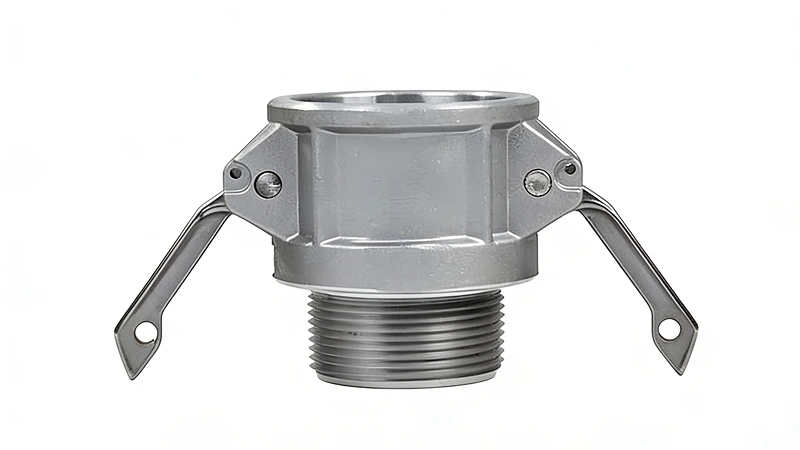
Compatible Accessories
- Industrial hose couplings designed for high pressure Lay flat hose applications
- Camlock, threaded, and quick-connect fittings for fast deployment and removal.
- Manifolds and adapters for multi-line discharge or system expansion
- Clamps and hardware engineered for reinforced Lay flat hose connections
- Protective fittings that help maintain cut-resistant, puncture-resistant, and drag-resistant performance during operation

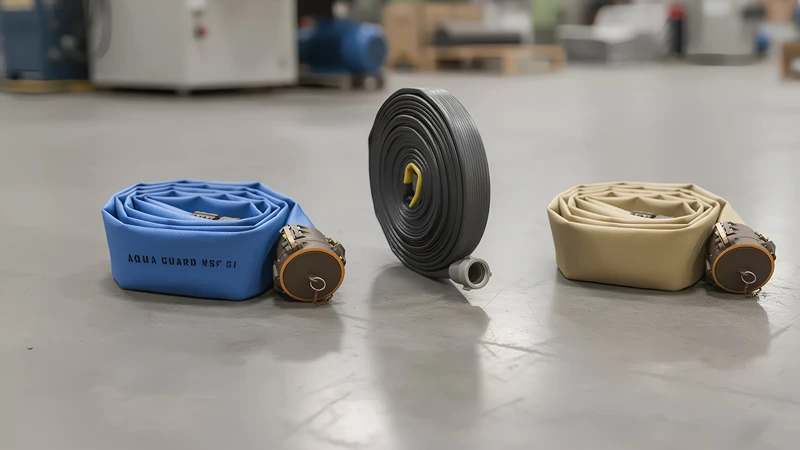
Related Lay Flat Hose Solutions
- Aqua Guard lay flat hose for NSF-certified potable water transfer applications.
- WAT-Hog lay flat hose for fuel, wastewater, and long-distance high-flow transfer in extreme environments.
- Additional Anaconda industrial lay flat hose options to match specific pressure, flexibility, and media requirements.
Pairing Armour Guard with the right accessories helps maintain pressure integrity, extend service life, and support safe, efficient industrial operations across a wide range of discharge applications.
Contact Anaconda Pipe & Hose
Speak with our experts to define the right solution for your project. Our team supports you from initial planning through execution.
Flexible access to heavy-duty performance without ownership.
Armour Guard Lay Flat Hose Rentals
Armour Guard® lay flat hose rentals provide a practical option for short-term, emergency, or project-based industrial discharge needs. This heavy-duty Lay flat hose delivers the same abrasion resistance, pressure stability, and rugged performance as purchased hose, without upfront capital costs.

Ideal for:
- Temporary bypass pumping
- Construction and site dewatering
- Maintenance shutdowns
- Emergency water discharge
Rental benefits:
- Proven Armour Guard industrial hose performance
- Ready-to-deploy with compatible couplings and fittings
- Reduced downtime and storage requirements
Armour Guard rentals give you a reliable, high-durability lay flat hose solution exactly when and where it is needed.
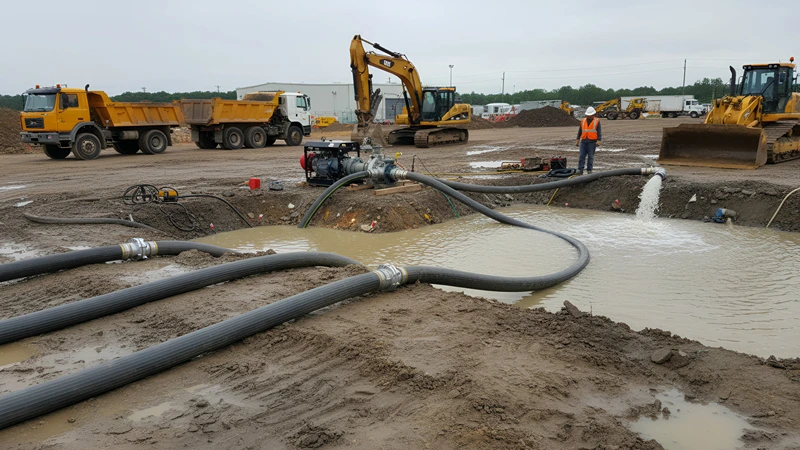
Industrial Applications & End-Use Sectors
The Armour Guard Lay flat hose is designed for demanding industrial environments where abrasion, pressure, and handling stress are constant. Its heavy wall, reinforced construction makes it suitable across multiple sectors that require reliable, high-durability discharge solutions.

Industries using Armour Guard include
Built as a rugged industrial hose, Armour Guard supports long service life and dependable performance across high-wear, high-demand applications.

Construction
Site dewatering, water transfer, and temporary discharge lines

Mining & Quarrying
Abrasive water handling and rugged ground conditions

Industrial & Manufacturing
Process water discharge and plant maintenance

Oil & Gas Support Operations
Non-potable water transfer and utility discharge

Municipal & Infrastructure
Bypass pumping and maintenance projects

Agriculture
High-flow irrigation and water movement in harsh field conditions

Marine & Ports
Dockside discharge and industrial water handling
Case study
Reducing Downtime in a High-Wear Industrial Dewatering Project
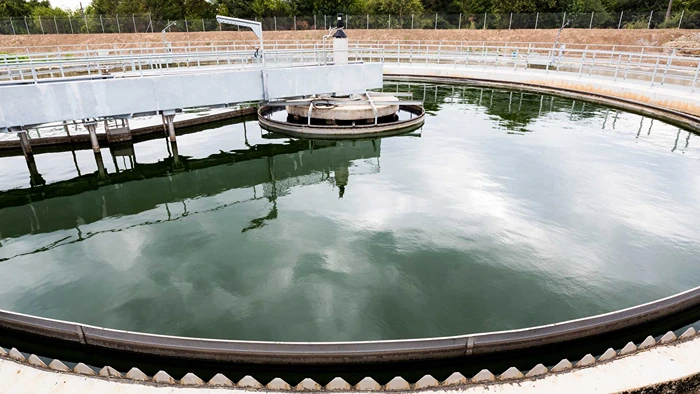
Challenge
A civil construction contractor required a reliable industrial lay flat hose for a temporary dewatering operation on a large infrastructure site. The hose line was frequently dragged across rough ground and exposed to constant pressure cycling, causing repeated failures with standard discharge hoses. Abrasion, punctures, and pressure loss were leading to downtime and frequent replacements.

Solution
The contractor deployed the Armour Guard lay flat hose, selected for its heavy wall construction, reinforced design, and high wear resistance. The abrasion-resistant lay flat hose with a nitrile PVC blend and high-tensile reinforcement was configured with compatible couplings for fast installation and redeployment as site conditions changed.


Results
- Improved reliability under continuous drag and abrasive conditions
- Stable performance at the required operating pressure with reduced friction loss
- Fewer hose failures compared to the previous standard hoses
- Reduced maintenance time and lower replacement frequency

Outcome
By using a high durability lay flat hose designed for extreme duty applications, the contractor maintained uninterrupted dewatering operations and improved overall jobsite efficiency. Armour Guard proved to be a rugged industrial hose solution well-suited for demanding, short-term, and project-based industrial applications.

Frequently Asked Questions
What applications is the Armour Guard® lay flat hose best suited for?
Armour Guard is designed for demanding industrial discharge applications such as construction dewatering, mining operations, municipal bypass pumping, and general industrial water transfer, where abrasion, dragging, and pressure fluctuations are common.
Is Armour Guard suitable for potable or drinking water use?
No. Armour Guard industrial hose is not intended for potable water transfer. For applications involving drinking water, Aqua Guard should be used as it is NSF 61 certified.
What makes Armour Guard different from standard lay flat hoses?
Armour Guard features a heavy wall, extruded-through-the-weave construction using a nitrile PVC blend. This design provides higher abrasion resistance, improved pressure stability, and a longer service life compared to standard PVC or rubber lay flat hoses.
How abrasion-resistant is the Armour Guard lay flat hose?
Armour Guard is engineered as an abrasion-resistant lay flat hose with a protective outer cover that withstands dragging over rough ground, contact with debris, and repeated handling in harsh jobsite conditions.
Can Armour Guard handle high-pressure discharge operations?
Yes. It is a high-pressure lay flat hose designed with high-tensile reinforcement and anti-burst technology to maintain consistent working pressure in industrial environments.
What type of reinforcement is used in Armour Guard?
The hose incorporates fully encapsulated high-tensile reinforcement yarns, making it a reinforced lay flat hose capable of delivering strength, flexibility, and pressure reliability.
Is Armour Guard resistant to chemicals, oils, and fuels?
Yes. The nitrile PVC blend offers resistance to fuels, oils, heat, ozone, and a wide range of industrial chemicals, making it suitable for tough industrial discharge conditions.
How does the smooth-bore hose design improve performance?
The smooth-bore interior reduces friction loss during operation, allowing higher flow rates and more efficient pumping compared to rough-bore hose designs.
Is the Armour Guard industrial hose easy to store and transport?
Yes. Armour Guard lies flat when not in use, requiring minimal storage space and allowing easier handling and transportation between job sites.
What temperature range can Armour Guard operate in?
The hose is designed to perform reliably across a wide temperature range, approximately from -36°F to +120°F, supporting use in varied climates and environments.
Contact Anaconda Pipe & Hose
Speak with our experts to define the right solution for your project. Our team supports you from initial planning through execution.

